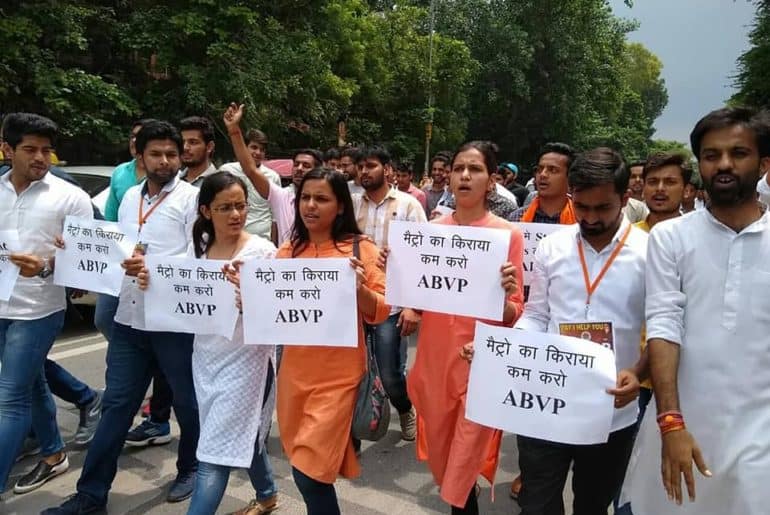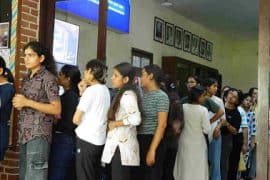As the country’s capital, Delhi has witnessed student movements and politics with the greatest trajectories. Other universities in India do not observe the same scenario. What makes politics and DUSU elections at DU different? Read on to find out.
The University of Delhi (DU) has never faltered to be on the forefront of political upheaval in the nation. From Gurmehar Kaur’s anti-war stances and resistance in the face of dogmatic backlash to her opinions, to Umar Khalid being shot two days before Independence Day, the students in Delhi have been vocal and active in their dissent and their vision to make a difference. During the election season in DU, the collaborative accounts of students reveal a picture of the campus filled with pamphlets, party supporters driving around in expensive vehicles, rallies, gatherings, and heated quarrels between the student leaders.
The candidates use techniques of mass polarisation by making promises of substance and raising appeal by distributing numerous popular items among students. There is an essence of participatory politics where students sit and discuss the candidates, party agendas, motivations, and political ideologies concerning the students. In a stark contrast to the situation in the capital, the atmosphere in the University of Mumbai is laid back. Students in Mumbai seldom voice their disapproval in the form of long-lasting loud protests. One of the deliberated reasons for this is the fact that colleges in Mumbai have an autonomous culture with rare unity as a single University, unlike DU. There are no common elections for the University of Mumbai, and the election day in colleges involves 20 to 25 people sitting in a room, discussing agendas, and finally voting for various posts.
At the Indian Institute of Technologies (IITs), there is a state of polarisation for freshers and some rallying, but the intensity of DU still supersedes. Shivam Rohilla, a third-year student at IIT Kharagpur, states, “Publicity levels are extremely high during elections, especially targeting the fresher population of over 1,400. But the passion of politics of DU is much higher.” Students at the Banaras Hindu University gripped this country’s attention in 2017 with their protests against the gender discriminatory practices of the university. The #Hokkolorob (make some noise) Movement in Jadavpur University of Kolkata against the molestation of female students resulted in the resignation of Abhijit Chakraborty, the Vice Chancellor.
Many such incidents have occurred across the country, but they do not receive the same traction as political movements in DU often do. Vishal Ranka, the current Sports Secretary at Usha Pravin Gandhi College in Mumbai, shared his experience of studying a semester in DU, and said, “People here at Mumbai University are more confined to their colleges and react to the issues with peace, which is irritating some times, but in DU, the scene has a way stronger vocalisation of its issues.” He believes that the influence of the national political parties on the student politics in Delhi, like Akhil Bharatiya Vidyarthi Parishad and the National Students’ Union of India has a great impact on the political scene at DU.
Feature Image Credits: DU Beat.
Anushree Joshi



Comments are closed.